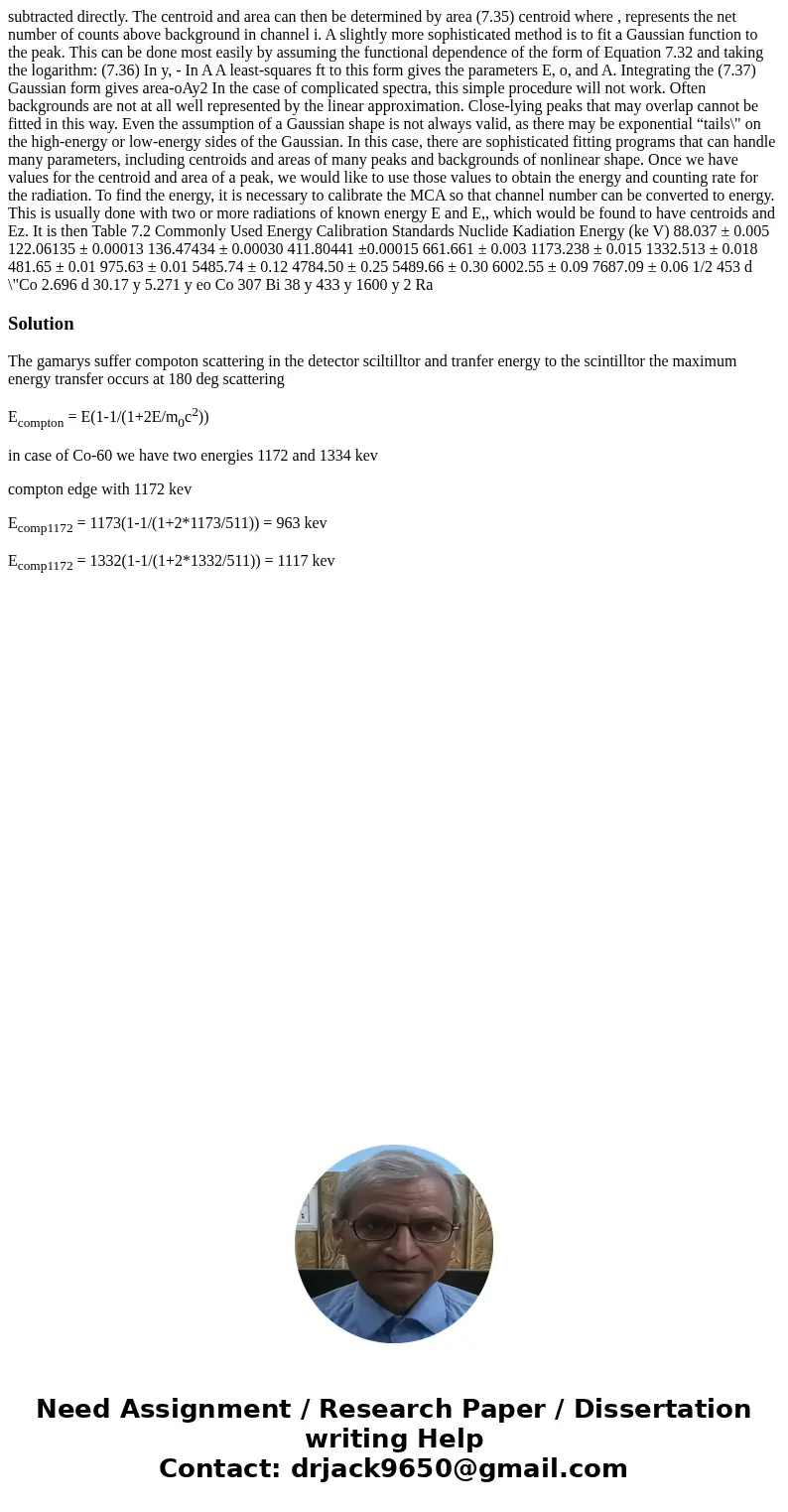subtracted directly The centroid and area can then be determ
subtracted directly. The centroid and area can then be determined by area (7.35) centroid where , represents the net number of counts above background in channel i. A slightly more sophisticated method is to fit a Gaussian function to the peak. This can be done most easily by assuming the functional dependence of the form of Equation 7.32 and taking the logarithm: (7.36) In y, - In A A least-squares ft to this form gives the parameters E, o, and A. Integrating the (7.37) Gaussian form gives area-oAy2 In the case of complicated spectra, this simple procedure will not work. Often backgrounds are not at all well represented by the linear approximation. Close-lying peaks that may overlap cannot be fitted in this way. Even the assumption of a Gaussian shape is not always valid, as there may be exponential “tails\" on the high-energy or low-energy sides of the Gaussian. In this case, there are sophisticated fitting programs that can handle many parameters, including centroids and areas of many peaks and backgrounds of nonlinear shape. Once we have values for the centroid and area of a peak, we would like to use those values to obtain the energy and counting rate for the radiation. To find the energy, it is necessary to calibrate the MCA so that channel number can be converted to energy. This is usually done with two or more radiations of known energy E and E,, which would be found to have centroids and Ez. It is then Table 7.2 Commonly Used Energy Calibration Standards Nuclide Kadiation Energy (ke V) 88.037 ± 0.005 122.06135 ± 0.00013 136.47434 ± 0.00030 411.80441 ±0.00015 661.661 ± 0.003 1173.238 ± 0.015 1332.513 ± 0.018 481.65 ± 0.01 975.63 ± 0.01 5485.74 ± 0.12 4784.50 ± 0.25 5489.66 ± 0.30 6002.55 ± 0.09 7687.09 ± 0.06 1/2 453 d \"Co 2.696 d 30.17 y 5.271 y eo Co 307 Bi 38 y 433 y 1600 y 2 Ra 
Solution
The gamarys suffer compoton scattering in the detector sciltilltor and tranfer energy to the scintilltor the maximum energy transfer occurs at 180 deg scattering
Ecompton = E(1-1/(1+2E/m0c2))
in case of Co-60 we have two energies 1172 and 1334 kev
compton edge with 1172 kev
Ecomp1172 = 1173(1-1/(1+2*1173/511)) = 963 kev
Ecomp1172 = 1332(1-1/(1+2*1332/511)) = 1117 kev

 Homework Sourse
Homework Sourse